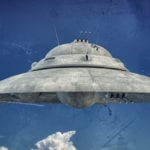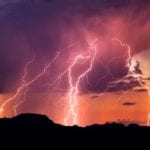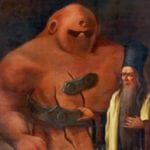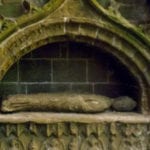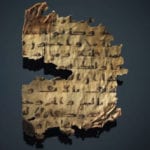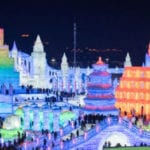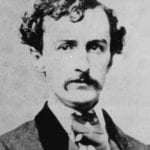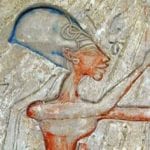 Weird Stuff
Weird Stuff  Weird Stuff
Weird Stuff  Mysteries
Mysteries 10 Tragic Disappearances and Deaths in Joshua Tree National Park
 History
History 10 Ways Childhood Really Sucked in the Old West
 Music
Music 10 Name Origins of Famous Bands from the 1990s
 Religion
Religion 10 Biggest Turnarounds by the Catholic Church
 Weird Stuff
Weird Stuff 10 Unbelievable Times Laws Had Unintended Consequences
 Humans
Humans Ten Historic Women Who Deserve Way More Credit Than They Got
 Movies and TV
Movies and TV 10 Films That Spawned Major Lawsuits
 History
History Ten Times Towns Were Wiped Off the Face of the Earth
 Creepy
Creepy 10 of the Most Disturbingly Haunted Public Houses in the UK
 Weird Stuff
Weird Stuff 10 Niche Subcultures That Are More Popular Than You Might Think
 Mysteries
Mysteries 10 Tragic Disappearances and Deaths in Joshua Tree National Park
 History
History 10 Ways Childhood Really Sucked in the Old West
Who's Behind Listverse?

Jamie Frater
Head Editor
Jamie founded Listverse due to an insatiable desire to share fascinating, obscure, and bizarre facts. He has been a guest speaker on numerous national radio and television stations and is a five time published author.
More About Us Music
Music 10 Name Origins of Famous Bands from the 1990s
 Religion
Religion 10 Biggest Turnarounds by the Catholic Church
 Weird Stuff
Weird Stuff 10 Unbelievable Times Laws Had Unintended Consequences
 Humans
Humans Ten Historic Women Who Deserve Way More Credit Than They Got
 Movies and TV
Movies and TV 10 Films That Spawned Major Lawsuits
 History
History Ten Times Towns Were Wiped Off the Face of the Earth
 Creepy
Creepy 10 of the Most Disturbingly Haunted Public Houses in the UK
10 Spooky Spirits Who Guided Intriguing People
The term “spirit guide” is used to describe a spirit that offers wisdom or protection to living beings. Typically, someone acts as a channel for the spirit, using verbal or written communication to transmit its messages. These people are usually called mediums. The personality of the medium changes depending on the guide they’re channeling.
Often, these spirits are historical figures, such as William Shakespeare. The famous playwright was a common encounter for mediums in the 18th and 19th centuries. Other times, the spirits are less well-known. They also tend to be “elevated beings,” such as special orders or Tibetan masters. Frequently, it’s not only the spirit guide that’s interesting, but also the person being used as a channel. Here are some of those intriguing individuals and the spirits that they claimed guided them.
10 William Thomas Stead And Julia Ames
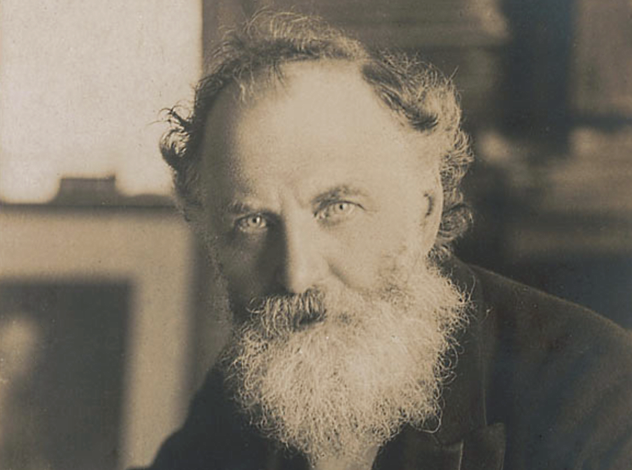
William Thomas Stead was a pioneering journalist who crusaded against the 1876 Turkish atrocities. He also tackled London’s horrible housing problem and shocked his readers by exposing the extent of child prostitution in the city. Stead was also an enthusiastic spiritualist from the age of 20.
From 1897 onward, Stead published a number of messages from a dead US Methodist journalist and reformer named Julia Ames. The collection was called After Death, Or, Letters from Julia: A Personal Narrative. He insisted that communications from Julia did not proceed from his conscious mind.
Any doubts that Stead may have had about psychic phenomena faded away when his eldest son, Willie, died in December 1907 at age 33. Almost every week during the next year, he received what he believed were messages from his dead son. Two years later, he founded Julia’s Bureau, an office “to enable those who had lost their dead [ . . . ] to get in touch with them again.” Julia was considered the guiding force behind the bureau’s work.
In 1912, Stead went down with the Titanic. Survivors reported that he was of “the most beautiful composure,” as he adopted “a prayerful attitude . . . of profound meditation.”
9 Cora Scott And Adin Augustus Ballou
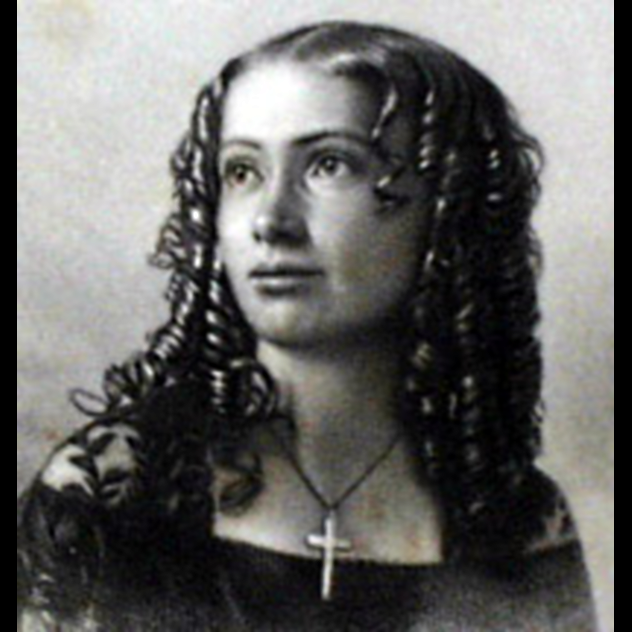
In the 1850s, no medium was as renowned as Cora L.V. Scott. The press was fascinated with her, describing her hair as “flaxen ringlets falling over her shoulders.” A photograph that was widely circulated at the time shows Scott with her flowing pre-Raphaelite locks and youthful gaze.
Cora’s father was described as an independent free thinker who was interested in utopian societal reform. He once visited Adin Ballou, a minister who practiced Christian Socialism. Inspired by Ballou’s community of Hopedale, Cora’s father bought his own land in 1851, hoping to build a similar colony. However, his plans were put on hold when his daughter began to show potential as a medium.
Her first and most notable spirit guide was Adin Ballou’s dead son, Adin Augustus Ballou. Cora’s first contact with the deceased Ballou occurred when she was 11. She was living at Hopedale when she went into a trance, and Ballou began to speak through her.
The younger Ballou had been the spiritual heir of his father’s religious community, and his death was a devastating loss. Through Cora, he could now continue his ministry. The spirit of Ballou also communicated through a “writing medium” named Elizabeth Alice Reed and through yet another woman named Mary Bowers.
The elder Ballou was so convinced by these communications that he wrote a book about spirit phenomena. Cora went on to continue her career as a medium and channeled many other spirits, including Abraham Lincoln and a young Indian maiden named Ouina.
8 W.B. Yeats, Geraldine Cummins & George
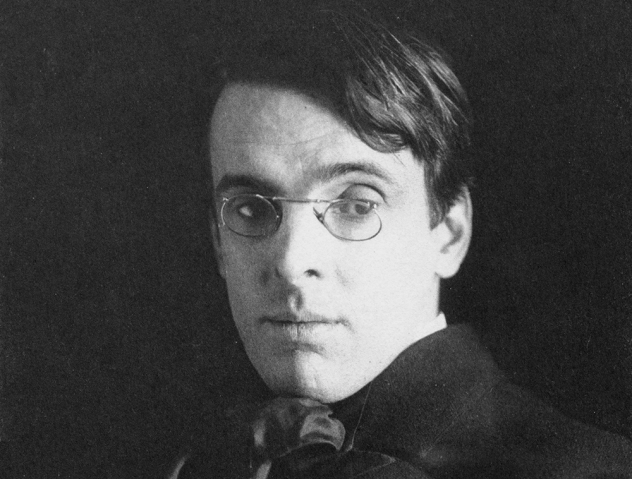
The Irish poet W.B. Yeats once visited a perceptive medium named Geraldine Cummins. Cummins was one of spiritualism’s most respected mediums at the time. Among other things, she was a “speech-making suffragette,” a cause that led to “being stoned through the streets of my native city by the sweated women factory workers whose cause I so ardently espoused.”
During World War I, Cummins had a premonition of the death of her brother, Harry. He had been serving with the Fifth Gurkhas in Gallipoli. In her dream, Harry was running ahead of Cummins on an open plain. Then she heard a voice saying, “You will never see Harry again.” She awoke trembling with emotion. Three weeks later, Harry was killed in an attack against the Turks on an open plain in broad daylight.
Cummins was in her twenties when she was introduced to W.B. Yeats, who was interested in psychic matters. At the time, Cummins summoned a spirit guide named George. George would borrow her hand and arm to produce automatic writing. During the session Cummins had with Yeats, George wrote about people who lived in an ancient castle. Cummins asked if Yeats wanted her to move ahead with the session. Yeats was fascinated by what George was writing. “That’s the plot of my current book,” he quietly said.
Could there have been a psychic connection between Yeats and Cummins, as opposed to her simply being a medium? Yeats had been thinking of his fictional castle and its inhabitants for some time, leaving the possibility that the force manipulating the hand of Cummins was from his mind.
7 Charwe Nyakasikana And Nehanda
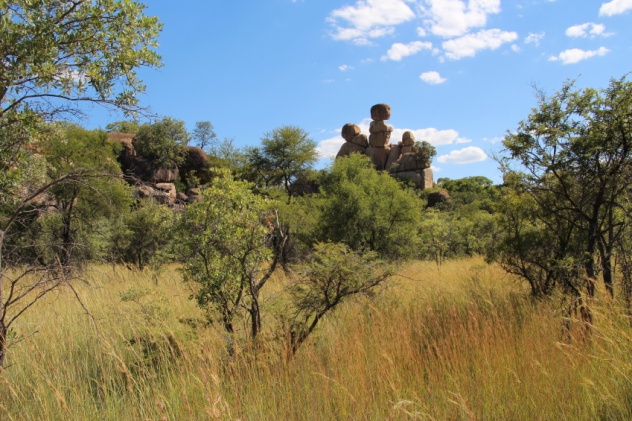
Born in 1840, Charwe Nyakasikana was a spirit medium of the Zezuru Shona people near Mazowe in Africa. She performed traditional ceremonies to ensure rain and good crops. She also made visionary pronouncements on behalf of the ancestral spirit Nehanda. Hence, she is usually referred to as Nehanda Charwe Nyakasikana in history books.
A Zimbabwean ancestral spirit, Nehanda is thought to be a leader in war and maker of rain. Such ancestral spirits are thought to be of important chiefs and political rulers who have returned to protect their people. They act through mediums, who are men or women associated with the welfare of their community.
Charwe promoted good relations between the Zezuru people and European pioneers. But that soon changed once the pioneers became settlers and grievances began. She was convinced by a medium named Kaguvi, considered her ghost husband, that much of the trouble their people experienced was due to the white man.
Charwe preached that locusts, drought, and rinderpest (a viral cattle disease) were the fault of the European settlers and that the supreme god Mwari would turn their bullets to water. She was eventually captured by the British and charged for the murder of a native commissioner. Charwe was executed by hanging. Her heroism in the face of colonial power later became a source of inspiration.
6 Eusapia Palladino And John King
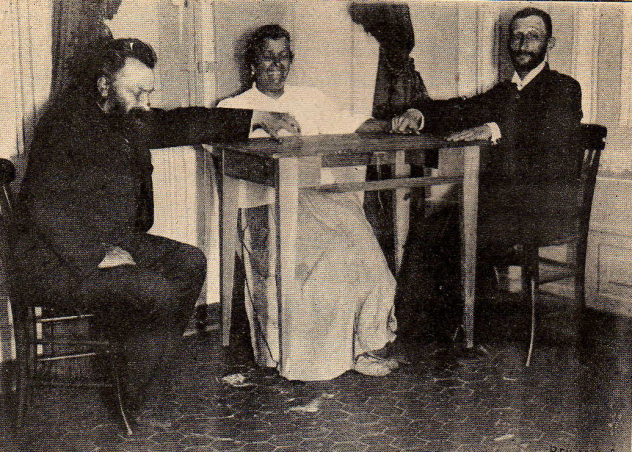
Born in 1854, Eusapia Palladino was a controversial Italian spiritualist who attracted much attention. As the book The Physical Phenomena of Spiritualism exclaimed: “One half the world is convinced that Eusapia is a fraud, and the other half is convinced that the phenomena witnessed in her presence are genuine!”
Her performances included objects moving without being touched (including the levitation of a table and other things), the appearance of hands and faces, and playing instruments without contact. A humble, illiterate woman, Palladino gave an air of authenticity, even though many were skeptical of her supposed psychic abilities.
In Naples, an English lady took part in a seance. During the seance, she encountered a spirit named John King, who told her to seek out the woman named Eusapia. He even gave her a street and house number. He said that Eusapia was a powerful medium through whom he would communicate.
The two women met for a seance, and afterward, John King would continue to talk through Eusapia. A well-known chemist, Professor Mapes, spent half an hour conversing with John King through Eusapia. He described the voice as loud and distinct.
The story was that John King was Eusapia’s father in a previous life. When he would speak through Eusapia, he would call her his daughter and showed great concern for her. However, a man named Dr. Ochorowicz, who was interested in the phenomena associated with Eusapia, thought that John was simply an alternate personality, taken from different impressions that Eusapia experienced in her life.
5 Leafy Anderson And Black Hawk
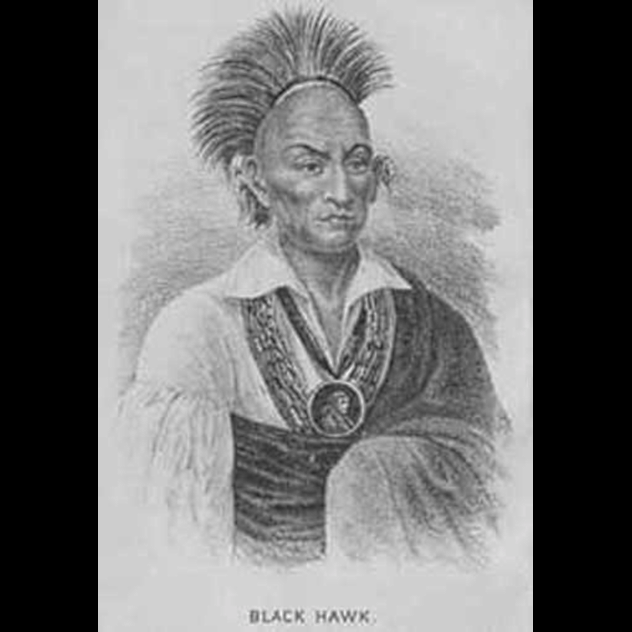
Leafy Anderson was the originator of many spiritualist churches in New Orleans. Some of this religious movement’s leaders traced its origins back to Marie Laveau, the 19th-century Voodoo practitioner, though Anderson himself repudiated any connection to Voodoo. During the religion’s first 15 years of existence, its leadership was almost exclusively made of women.
Thought to have been born in Wisconsin around 1887, Anderson moved to New Orleans around 1920 to establish a new church. She had a spirit guide named Black Hawk. There is a historical Black Hawk; he was leader of the Sauk and Fox Native American tribes and played a part in an 1832 uprising.
According to Anderson, Black Hawk was the saint for the South, and White Hawk was the saint for the North. Images of Black Hawk found their way into spiritualist and Voodoo churches, where he appeared alongside Moses, saints, angels, and Jesus. He was celebrated in rituals and ceremonies.
There was a Black Hawk service, where Anderson would display four spirits—Father Jones (possibly a mid-19th-century practitioner of Voodoo), White Hawk, the Virgin Mary, and finally Black Hawk. Sometimes, she wore all white with a purple veil, and other times, she wore a gold gown with a Black Hawk mantle over her shoulders. It had a picture of Black Hawk sewn on it.
Anderson’s services were quite different from that of most churches. She hired jazz performers and expressed her own cosmology of spirits outside of religious orthodoxy. Anderson died in 1927, but her memory lives on.
4 Helena Blavatsky And The Mahatmas
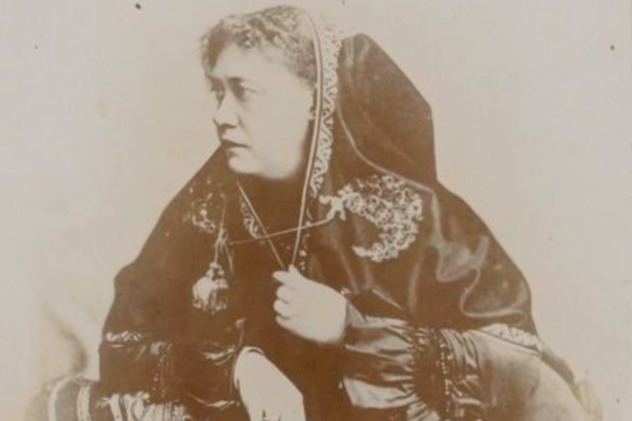
Helen Blavatsky was an occultist who cofounded the Theosophical Society in New York with her colleagues, Henry Steel Olcott and William Quan Judge, in 1875. It was considered the starting point of a spiritual revival, what is popularly referred to today as the “New Age.”
The Mahatmas were said to be an occult brotherhood living in a trans-Himalayan refuge in Tibet. Blavatsky claimed to have received training from these teachers. Later, she served as a channel for them and transmitted their ideas to her colleague, A.P. Sinnett. Eventually this correspondence was published as The Mahatma Letters to A.P. Sinnett.
In 1882, wealthy Indians aided Blavatsky in purchasing land for a beautiful international headquarters in Adyar, India. With her young Hindu assistants, she amazed her visitors with psychic marvels. These included written communications from the Mahatmas, notably one named Koot Hoomi. She did have a setback, however, when a Koot Hoomi letter was proven to have been plagiarized from an address given by a US Theosophist.
Blavatsky credited the authorship of her first book, Isis Unveiled: A Master-Key to the Mysteries of Ancient and Modern Science and Theology, to the Mahatmas. Skeptics traced many of the ideas in the book back to various published works on religion and philosophy. Blavatsky maintained that the core of her philosophy was that all religions and cults could be traced back to identical myths and symbols.
3 Helene Smith And The Martians

During a seance in the 1890s, Swiss medium Helene Smith (real name Catherine-Elise Muller) reported that she traveled to Mars and conversed with its inhabitants. She spoke for a few minutes, and most of the words were incomprehensible. She then said, “Oh I have had enough of it; you say such words to me I will never be able to repeat them.” She reported speaking in four Martian languages—Martian, Ultra-Martian, Uranian, and Lunar.
French psychologist Thomas Flournoy studied 40 of Smith’s seances. He recorded 160 Martian words that she used and analyzed how these words fit together. His conclusion was that the Martian language was, in every way except the vocabulary, identical to French. The grammar and sentence structure were the same. When Smith wrote out the Martian language, she used a strange set of hieroglyphs, also similar to French statements.
Her behavior could have been influenced by her mediumistic mother. Among other odd proclamations, Smith claimed to be the reincarnation of Marie Antoinette.
Smith was dismissed as either a hoax or naive. Still, it was highly unusual she could produce such unique speech over a period of time. She spoke so rapidly in her Martian language that it couldn’t be written down. Some experts think this was a case of glossolalia—fluid vocalizing without any meaning, commonly associated with speaking in tongues.
2 Jim Morrison And The Pueblo

“The first time I discovered death,” said Jim Morrison, “me and my mother and father, and my grandmother and grandfather, were driving through the desert at dawn.” The front man of The Doors then went on to describe a ghastly scene.
It was 1947, and he was four years old, riding with his family through New Mexico. They came across a number of Pueblo Native Americans who appeared to have been hit by another car. They were scattered all over the highway, bleeding to death. He continued: “I was just a kid, so I had to stay in the car while my father and grandfather went back to check it out . . . I didn’t see nothing—all I saw was funny red paint and people lying around.”
Morrison said that he could feel the vibrations around him and that it was the first time he tasted fear. At that moment, he felt that the soul of one or more of the dead Pueblo jumped into his body. Morrison felt like a sponge, ready to absorb their spirits.
This could have been the reason that Morrison had a deep interest in Native American rituals and shamanism later in his life. He ascribed to the transformational power of shamanism, the importance of bringing one’s fantasies into existence. He thought of himself as the electric shaman.
1 Carl Jung And Philemon
In 1917, psychotherapist Carl Jung had a vivid dream. The sky was covered by brown clods of earth. These clods were breaking apart, and blue water became visible, but the water was actually sky. Then a winged being appeared in the sky; it was an old man with the horns of a bull. He held four keys, and one he clutched tightly as if he was about to open a lock.
This old man had the colorful wings of a kingfisher. Jung painted the image and later found a dead kingfisher in his garden by the shore of a lake. It was an unusual occurrence, since kingfishers were rarely found in the vicinity of Zurich, where Jung was staying.
The winged being became known as Philemon and appeared in Jung’s Black Books beginning on January 27, 1914, without the kingfisher wings. To Jung, Philemon symbolized superior insight and became a guru to him. He would converse with him while walking in the garden. Jung recalled that the figure evolved from the Biblical Elijah.
However, Jung wrote that Philemon was pagan, grounded in Egypto-Hellenism and Gnosticism. Philemon helped Jung to recognize what he called psychic objectivity, where psychic images have an independent existence, just like animals, people in a room, or trees in a forest. It was also possible that he was looking for a spiritual guide at the time, so his mind projected Philemon.
It was around this time that Jung had powerful visions of a monstrous, world-destroying flood. In his mind’s eye, Jung saw the rubble of civilization with thousands of drowned bodies and a sea turned to blood. He also had dreams of an Arctic cold wave that would kill all living things. A third sequence transformed the wave into a leaf-bearing tree.
Not long after Jung’s strange visions, World War I began.
B.C. Bailey is a content crafter working at the intersection of design, writing, and wondering. You can check out his blog at bcbailey.be.
